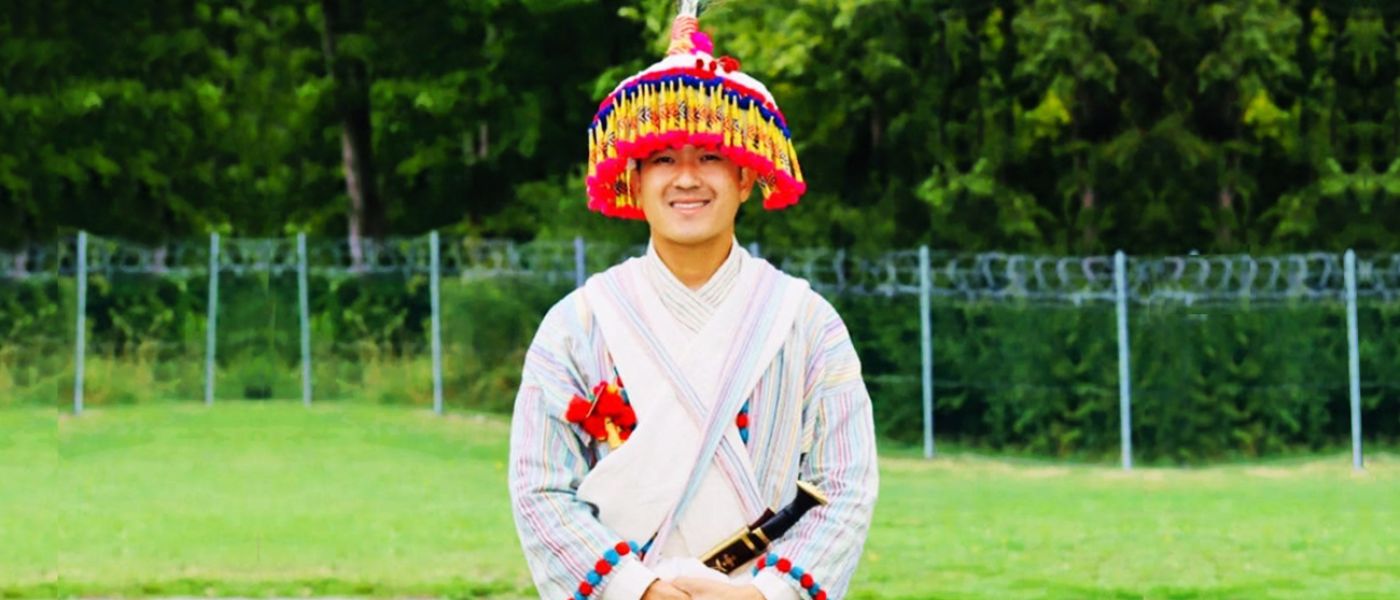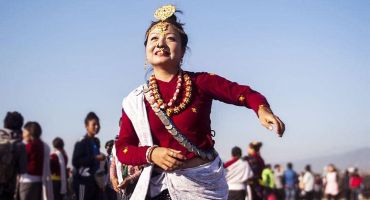All around the world, affirmative action is implemented to address racial and economic inequality and social marginalization. In India, affirmative action is a deeply debated issue. In a country that is intensely divided along ethnic, religious, or linguistic lines and marked by innate institutional and hierarchical obstacles to social egalitarianism, safeguarding the welfare and developing the socio-economic status of marginalized communities seems possible only through affirmative action. Affirmative action in India provides fixed reservations for certain marginalized groups who are called Scheduled Castes (SCs), the Scheduled Tribes (STs), and the Other Backward Classes (OBCs).
The term ‘scheduled’ is used because these communities have been given recognition in Schedule 5 of the Indian constitution. Article 366 (25) defines Scheduled Tribes as ‘such tribes or tribal communities or parts of or groups within such tribes or tribal communities as are deemed under Article 342 to be Scheduled Tribes for the purposes of this constitution.’ Article 342 of the Indian constitution prescribes the procedure to be followed in the matter of specification of scheduled tribes.
India views its disadvantaged groups through the prism of social and economic disparity. To uplift these communities, the Government works in three chief domains- appointment and promotion in government services, admission to public education institutions, and seats in the legislature. These groups/communities also benefit from various welfare programs that protect their land and provide food, housing security, and stipends for students. To benefit from welfare schemes, many communities in India try to prove themselves eligible to be awarded the privileged ST status.

Over the years, the number of Scheduled Tribes in India has exponentially increased to 705. More communities are clamoring for recognition as ST, including the Tamu Gurung, Khambu Rai, and Magar communities of Darjeeling and Sikkim. The demand for ‘11 Gorkha Communities’ to be enlisted as STs has also gained momentum in recent years. Whether these communities are eligible to meet the constitutional criteria to be enlisted as a tribe is a different discussion altogether, one that requires a deep anthropological and political study. Still, the achievement of the ST status of the Tamu Gurungs, Khambus, and the Magars was always considered inevitable.
But it did not happen.
Apart from social movements or political persuasion, and its causes and effects, there are unbreakable constitutional rules to achieve ST status. A state government has to recommend a community to become a Scheduled Tribe to the Ministry of Tribal affairs. In West Bengal, the Cultural Research Institute conducts thorough research on a community before the state makes any recommendations. The Ministry of Tribal affairs takes the studies of the Registrar General of India (RGI), Anthropological Survey of India (ASI), and the National Commission for Scheduled Tribes (NCST), simultaneously.
The file will then reach the upper echelons of the ministerial pyramid. It will go through a committee of secretaries, headed by the secretary of Tribal Affairs and including secretaries of the Parliamentary committee for social justice and empowerment, Legal affairs, Home Ministry and Culture. This committee will decide, and the file will go to the Cabinet. We can presume that many cases are politically sensitive and are, hence, pending for years. Constitutionally, though, the entire process wouldn’t take more than six months. Government bodies such as the Burman Commission, Vishu Maini committee, and members of ASI have visited the ‘potential’ tribal communities of Sikkim and Darjeeling over the years. The demand for ST status by the organizations of the Khambus, Gurungs, and Magars has exceeded over two decades, and the files lay stationary at the office of the RGI and do not seem to move farther.
In the schisms between general anthropological validation and the particularities of politics and bureaucracy, there is a continuing struggle over what it means to be a tribe today and which one can be legitimately identified as one. There are five criteria for inclusion of a community in the STs List, and the concerned Government bodies require empirical evidence that a community collectively exudes these distinct characteristics.
- Primitive Way of Life (traits),
- Distinctive culture
- Shyness of contact
- Geographical isolation
- Backwardness (Socio-Economic, Educational)
Setting all political influences, consequences, and the ‘6th schedule’ theory aside, let us look at how communities could fulfill the criteria.

How does a community establish that it follows a primitive way of life? Primitive traits mean bearing cultural or physical similarities with the early ancestors. From a Khambu perspective, this is possible with a display of the community’s Shamanic and Animistic roots. The custom of Khambu Suptulung reverence and its Sikari hunting rituals are reminiscent of the traditions of their ancestors. From an ethnographic standpoint, identifying a group’s culture—that shared reference system that guides a group members’ behavior, is not a simple task, but employing both qualitative and quantitative methods that seek to understand the cultural lens through which members of a group perceive their world, it is possible.
Sociologists and anthropologists, throughout the decades, have argued over the appropriate definition of culture. There is, however, a consensus, that culture is a combination of figurative mediums of values, such as beliefs, rituals, and art forms. These mediums are further embellished with language, lore, stories, and traditions through which social processes of communication, exchange, and perceptions occur. Some cultures are influenced. Others could be learned, shared, or integrated, but if a community’s culture has refrained from these influences, it could be called distinctive.
Shyness of contact with the community at large requires a community to establish the prevalence of shyness within its members. Shyness, here, does not mean pathological disorder. It refers to how a tribe adapts to traditional concepts of development and socialization. It is about the behavioral inhibition that fosters culturally appropriate, socially desirable characteristics. Tribal values cultivate the idea of one being just a tiny part of nature and may not endorse pro-social values that possibly lead to development in the modern world. Tribal shyness will exude humility, consideration, and awareness of the social and physical surroundings. One could study shyness of contact by collecting statistical data on vocational interests within a community and categorizing them based on gender, income, age, and geography. Figures can be collected on the gap between endogamous and exogamous marriages within the community.
Khambus, Gurungs, and Magars essentially live in clusters among their people. This is because tribal people are distinct social and cultural groups that share collective ancestral connections to the lands and natural resources where they live. Although this too is a typical ‘shyness of contact’ trait, it can fulfill the criterion of Geographic Isolation. Himalayan tribal communities, for a period of time, have had limited contact with the outside world. This long-term isolation has resulted in these homogenous clusters being far from urban centers. Here, data can be collected to identify the locations of these isolated clusters to estimate the total population of people. An evaluation of landscape features characteristic of areas used by isolated peoples, and how the regions are far from motorable roads, educational institutions, medical centers, and police stations, can be measured with accuracy.
All five criteria required for the specification of a community as Scheduled Tribes must invariably indicate that systemic discrimination and exclusion experienced by these groups has resulted in deprivation and poverty. In India, Scheduled Tribes are those communities that have long suffered discrimination and exclusion. This is reflected in a lack of access to income-earning, higher-quality employment, and public services and subsequently specifies Backwardness, social, educational, and economic. Collecting data regarding financial and educational backwardness is not a daunting task. However, that is what probably plagues the whole demand for ST status.

Can we definitively designate these tribes as socially and economically backward? While these tribes have survived a tragic history and are still languishing in remote regions and suffering from the iniquities of the tea gardens, a group of elites has broken this cycle nonetheless. Members of these tribes are mainstream politicians, literary figures, respected professionals, and public figures. They hold prominent positions in both private and public sector jobs. An overwhelming number of people from these communities join the military and receive the benefits of a mainstream career. These elites have the education and financial stability to give future generations better opportunities, thus creating a cycle of community improvement.
In the wake of continuing demand for reservation by new social groups, affirmative action establishments in India have become cautious about specifying a community as ‘disadvantaged’ or backward. This has also caused many to question the efficiency, implications, form, and capacity of affirmative action programs in India. While affirmative action has served as an effective instrument of social justice, it is also grappling with several challenges, such as being able to identify genuinely marginalized groups.
Political pundits and analysts hint at the need for political inducement to get a community listed as a Scheduled Tribe. In the constitution, though, the criteria are not spelled out but are well established. The demand for ST status will continue to resonate in the hills of Darjeeling and Sikkim. For the tribes that relentlessly visit politicians and Government offices with memorandums, the question must not be whether the Khambus, Gurungs, and Magars are authentic tribes. It must be about whether these communities, which are tribes, are marginalized ‘backward’ groups in present India.





Leave a Reply